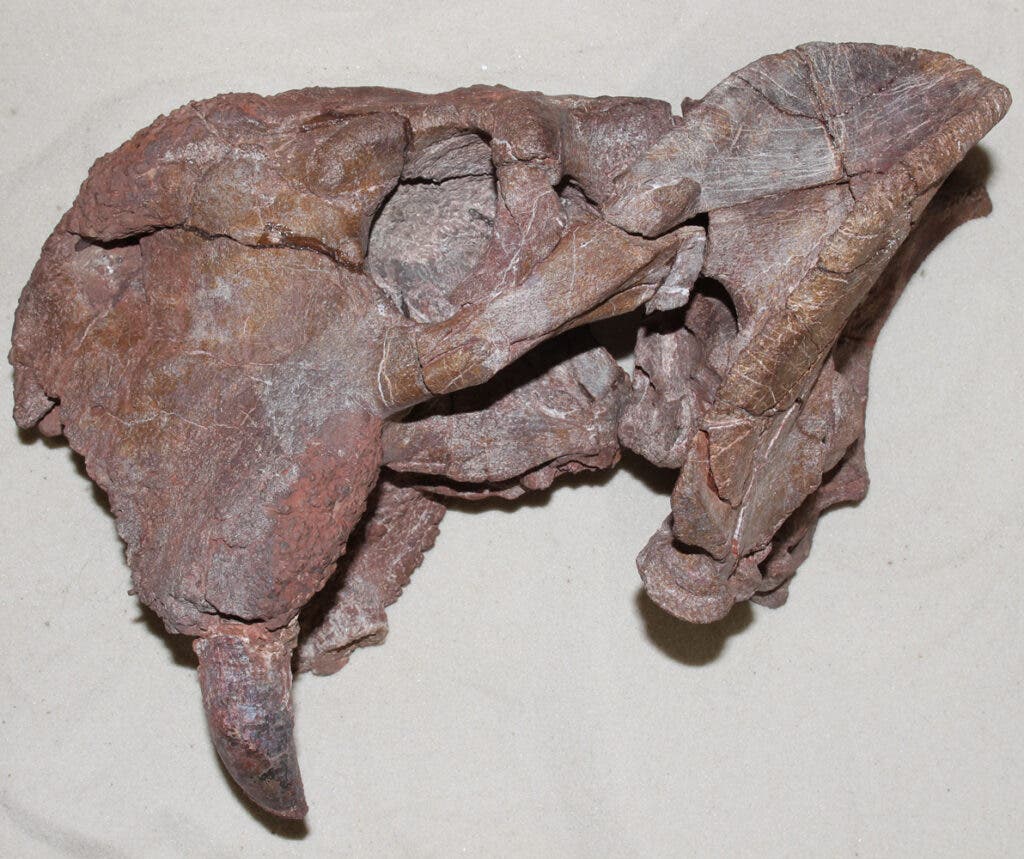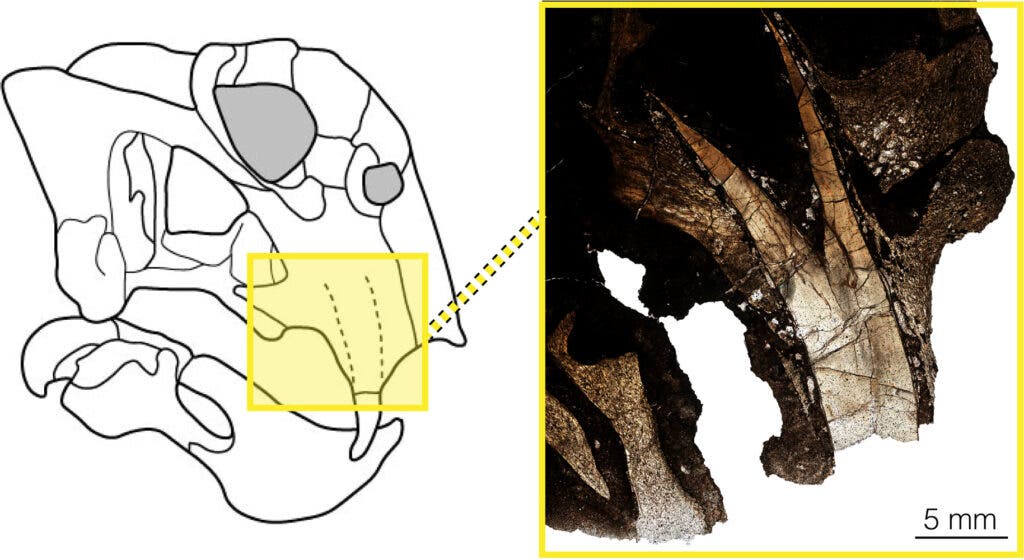What, exactly, makes a tusk a tusk? And how did they come to be? New research by U.S. paleontologists sheds light on both of these questions.

Multiple animal species today have tusks. From elephants to walruses, however, one thing they all have in common is that they’re mammals. This wasn’t always the case, new research reveals. The history of tusks, according to a team of paleontologists at Harvard University, the Field Museum, the University of Washington, and Idaho State University started with an ancient relative of mammals that lived before the age of the dinosaurs.
Those relatives were dicynodont (meaning “two canine teeth), a species that shared some of the characteristics of mammals but also reptiles — including sporting a turtle-like beak.
Tooth or tusk?
“For this paper, we had to define a tusk, because it’s a surprisingly ambiguous term,” said lead author Megan Whitney, a postdoctoral researcher at Harvard University and a UW doctoral alum, in a press release. “Enamel-coated teeth are a different evolutionary strategy than dentine-coated tusks. It’s a trade-off.”
For this study, the team defined tusks as being teeth not covered in enamel (i.e. they’re entirely made of dentine), that extend out past an animal’s mouth, and keep growing throughout the individual’s lifetime. Using this definition, the authors set out to determine the evolutionary history of such appendages. They worked with thin slices cut out from the teeth of several fossil species in order to determine when tusks first appeared. They investigated these using micro-CT scans, to determine how the teeth were attached to the skulls of the animals, and to check for signs of continuous growth around their roots.
Dicynodonts lived from 270 to 201 million years ago, roughly, so they’re quite ancient animals. As a group, they were very diverse, ranging in size from a rat to a modern elephant. They got their name from the two distinctive teeth in their upper jaws, teeth which were the focus of this study.
According to the findings, some dicynodont teeth were indeed tusks. One important finding is that there wasn’t a clear-cut transition between the two. The team analyzed 19 different dicynodont specimens comprising 10 species, finding that tusks evolved independently several times in this extinct clade. Another important hint that we’re looking at the first evolution of tusks was that the earlier dicynodont species only showed teeth, whereas tusks started making an appearance among the later species to arise in this clade.

“We were able to show that the first tusks belonged to animals that came before modern mammals, called dicynodonts,” said co-author Ken Angielczyk, a curator at the Field Museum in Chicago. “Despite being extremely weird animals, there are some things about dicynodonts — like the evolution of tusks — that inform us about the mammals around us today.”
The authors further report on some adaptations dicynodonts had to go through to enable the evolution of true tusks. These include flexible ligaments connecting the tusks to their jaws, and a reduced overall rate of tooth replacement. The roots of their tusks were hollow, as well, to allow for fresh dentine to be continuously added over time.
Apart from the findings of this study, the team’s classification of what exactly constitutes a tusk and how they’re different from regular teeth is more broadly applicable to other species. In particular, it gives us insight into the different tasks these structures are meant to serve.
The enamel layer on the surface of our teeth is harder than dentine, making it more resilient to wear and tear. But it’s also much harder to heal damaged enamel than it is to heal dentine. Its presence also prevents teeth from growing continuously, as tusks do. Animals with tusks use them for fighting or rooting through the ground, so they’re much more exposed to damage than teeth. A complete enamel covering would be impractical in this situation, as it would present a liability. Since tusks regrow, damaging or losing a tusk isn’t a death sentence. If they had the same structure as teeth, however, they couldn’t be replaced, and any damage would constitute a direct and significant threat to an individual’s survival.

“Tusks have evolved a number of times, which makes you wonder how — and why? We now have good data on the anatomical changes that needed to happen for dicynodonts to evolve tusks,” said co-author Christian Sidor, a UW professor of biology and a curator at the UW’s Burke Museum of Natural History & Culture. “For other groups, like warthogs or walruses, the jury is still out.”
Most of the dicynodont fossils analyzed in this study were unearthed in Tanzania and Zambia. They’re currently stored in a range of museums in the U.S., and are scheduled to be returned to the National Museum of Tanzania and the Livingstone Museum in Zambia after the conclusion of the research project.
The study “The evolution of the synapsid tusk: insights from dicynodont therapsid tusk histology” has been published in the journal Proceedings of the Royal Society B.


